
17 Uniquely Egyptian Things to Buy in Cairo
1. Incense
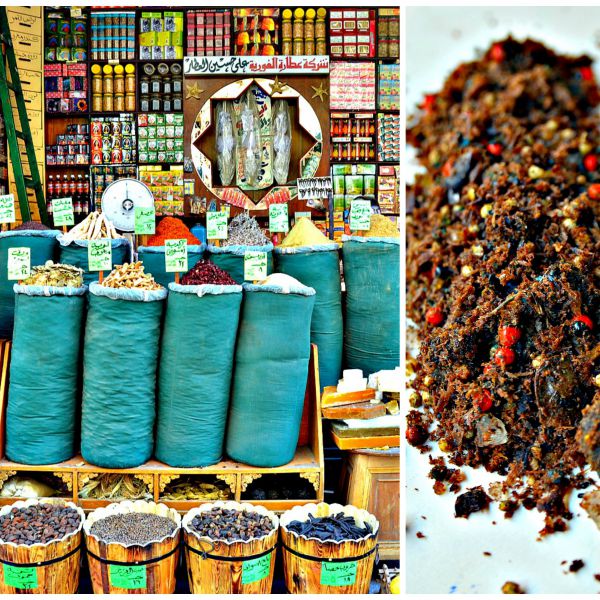
There are two types of incenses available. First is the very famous Oud or “Agar-wood”, which comes from the heart of the infected Aquilaria tree. Only trees infected “with some sort of mold” would produce the dark aromatic resin, that is processed into Oud. The raw materials are imported from countries of the Far East like India or Indonesia. Agar Wood is Egyptians' favorite fragrance, even though it is as pricey as it is pleasant. A cheaper alternative would be a mixed powder, containing other incenses like “Ein Al Afreet” and “Mastic”. The other type is Bokhor “Incense sticks”, available everywhere, from perfumery stores to supermarkets. It is of course a lot cheaper as it is made of regular wood mix soaked in fragrances or oils. These incenses are available in many shapes and varieties to fit different beautifully crafted censers.
Mainly used in religious rituals in mosques and churches around the world, Egyptians also use incenses to expel evil spirits from homes, as well as taking out bad smells.
The original Oud incense powder can be found only in certain stores, Khan El Khalili being the recommended place for many Oriental products.
Price:
Incense sticks (a box containing about 10 sticks): 5 ~ 10 Egyptian pounds
Local Incense powder: ~10 Egyptian pounds per 200 grams
Original Oud powder (mixed): ~100 Egyptian pounds per 50 grams
Located at the entrance of El Ghoria st. Al Azhar.
Tel: 0225883347
Open all week from 9:30 a.m. till 8 p.m.
2. Bastet, Antique Stones, and Statues Replicas
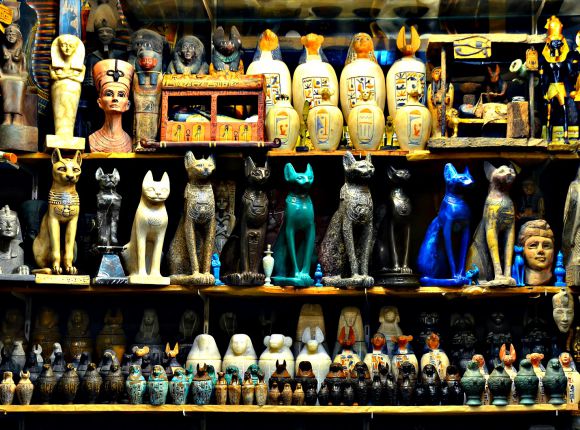
Another famous Egyptian icon is the Scarab beetle. The little blue ones resemble creation and resurrection, as the beetle seemed to come out of nowhere, out of mud. The Scarab is also the symbol of the Great “Ra”, the deity and leader of all Egyptian Gods who created himself out of nothing. A small blue beetle is a wonderful small gift with great meanings of renewal, regeneration, creation and resurrection. Mostly made of alabaster or granite, scarabs are available in many sizes to suit bracelets and necklaces or simply look over its owner from a shelf.
Price:
Small blue scarab stone: 7~15 pounds
Medium Bastet statue "about 25cm tall: 50 ~ 250 pounds (depending on material [plastic-granite-alabaster] used)
Large statue "about 45cm": 80 ~ 400 pounds (depending on material [plastic-granite-alabaster-wood], size and fine details applied)
5 rabaa el selehdar
Tel: (+20)107332293 - (+20)107541136
Open all week from 9:30 a.m. till 9 p.m.
3. Khayameya

Khayameya market is located right after “Bab Zewela”, where it is exhibited in a vivid variety by the many dealers of the ground floor, while the workshops are located on the second floor.
Price:
Around 1 square meter (printed) piece : 35 ~ 45 pounds
Original pieces (painted or mixed fabrics): around 80 ~ 150 pounds for the same size depends on design and details.
Khayameya Market, Al Mo-ez st., Bab Zewela., Near Al Azhar.
Open Monday to Saturday from 10 am till 9 pm.
4. Fez “Tarboosh”
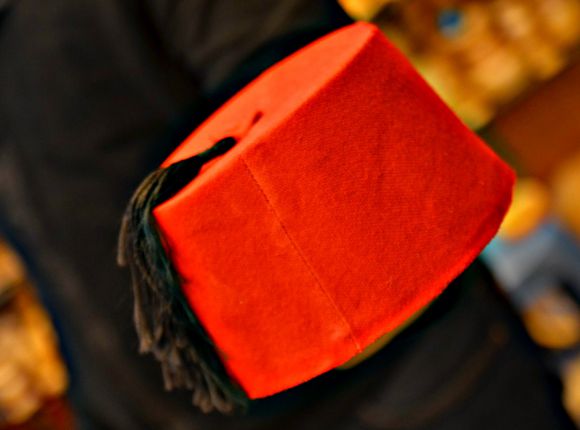
The Fez factory in Cairo is almost the only place in Egypt which still makes them. The hat is made by shaping palm wicker around a copper template then covered with durable Kilim fabric and placed under a special piston. Afterward, the Fez is carefully ironed and a tassel is attached. Tassels used to be of three colors: black or dark blue for teachers, professors, and business men, while the light sky-blue ones were for Muslim funerals Quran reciters. Tip: wrap a white turban around your Fez for an authentic Bedouin look!
Prices range from 20 to 80 pounds for an original fez. Cheaper models are not recommended as they usually have carton paper instead of a wicker, are made from a different fabric and won’t last for too long. Find a perfectly-sized fez in Moez street.
5. Hookah “Shisha”

Shishas come designed in many sizes, from a small “less than 30cm” boxed one to a huge “almost 2 meters high” multiple-hose hookah to smoke tobacco at large Hookah parties. Just make sure you get all the needed accessories if you intend to use it. Usually made of brass, sometimes covered in chrome coating, new Hookah designers use stainless steel for durability, keeping an eye for fine decorative details. Traditional hookahs are mostly found with a hand blown glass bowl, but models with brass bowl can also be found. After taking care of the hardware, let's have a look now on the different tobacco flavors ranging from the original “harsh flavor” Mu’assel (made of molasses mixed with vegetable glycerin), to the “soft flavored” fruit tobacco like Tof-fah “Apple” and Nea-naa “Mint”.
Hookahs are available is almost all souvenir stores, however recommended is you purchase one from Khan El Khalili, where you will be able to find competing prices and an impressive collection of hookahs in all sizes and materials.
Parts and accessories recommended:
Cleaning kit
Extra mouth tips “filter”
Extra bowls “Hagar”
Wind cover “mostly included”
Price:
Mini boxed about 26cm: 95 ~ 120 pounds
Medium sized brass: 150 ~ 200 pounds
Large: 250 ~ 300 pounds
Prices may vary depending on detail and materials used and extras included.
6. Cotton Robes and Vail “Jilbab & Burqa”
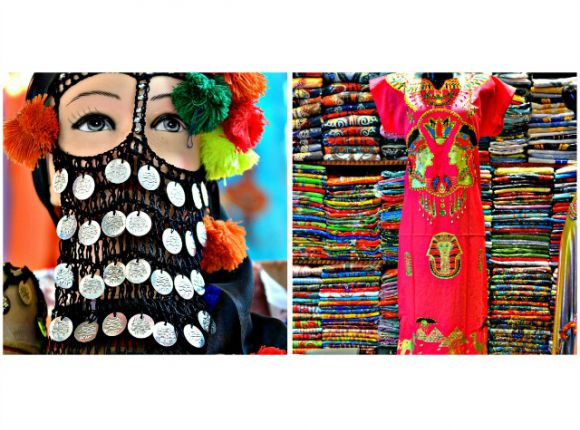
Most dominant clothing was and still is the regular Jilbab and Abaya (Galabeya) as it is pronounced in Egypt. This long loose cotton garment, with no collar and long wide sleeves, is the icon of comfort and coziness amongst most of the Egyptian farmers and Beduin men. Women's version would be more tight, mostly with a collar, and decorated with bright colors and coins. A regular Jilbab costs about a hundred pound and is easily found in many places around Cairo.
7. Jewelry Wooden Boxes
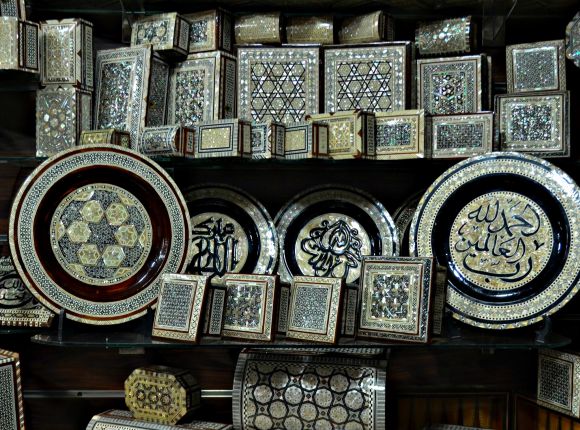
How are these wonderful jewelry boxes made? First, by shaping the box out of sturdy beech wood or light weight rose wood, then filling the inside with red velvet lining. Then, the outside surface is decorated with different kinds of fossils, ranging from the expensive “mother of pearl” to the moderate conch seashell or even cheaper - using white plastic pieces to meet all different budgets, without any loss of in fine details, gorgeous arrangements and designs. Keep in mind however that “mother of pearl” pieces will keep changing their colors as time go by. Owning this piece of Egyptian art is a veritable acquisition of a treasure that can be handed down from mother to daughter and a generation to another. There are some famous designs of Egyptian jewelry boxes that are inherited from older artisans who invented this craft and made the most beautiful boxes and chests to please their Pharaohs, like the coffin jewel box with its raised cover.
Pyramid shaped boxes are good for decoration but they won’t carry much. Try instead purchasing a piece from the artists' collection of octagonal, hexagonal, and rectangular shapes. Most of the boxes come with a simple lock and keys. Prices start from about 45 Egyptian pounds for a 25cm rectangular, well-decorated conch shell box.
8. Handcrafted Metal Works
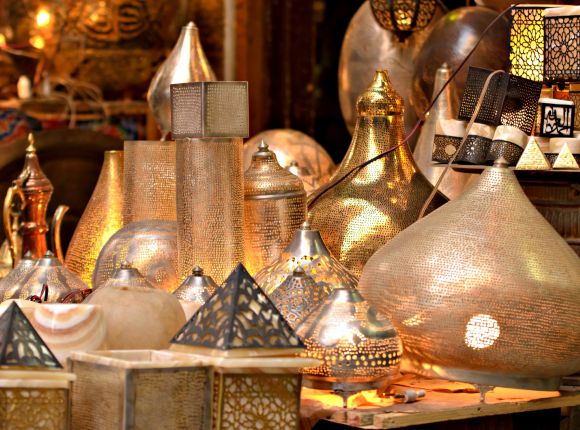
Mainly in Arabic homes you shall find hand-crafted tea and coffee cups and ewer, mostly from copper, but rich families would have it made of silver, or even gold. Home décor items such as plates hanging on walls, shelves engraved with religious sayings, quotes or names in beautiful Arabic typography are also to be found, along with drawings depicting the contemporary lifestyle or the ancient Gods and temples.
All metal handicrafts ranging from jewelry, utensils, to decorative plates or even Hookah bodies and lanterns are centered in Khan El Khalily and El Mosky, which abounds mostly in silver items. There you will be able to see skilled workers knocking on sheets of metal to shape the final products, or even have your portrait drawn on a decorative plate. These gifts will last forever, regardless of the money paid for them or material used:
- Copper
- Brass
- Silver [4 qualities (600, 800, 900, 925)]
- Gold coated Silver.
Prices vary, depending on the item and material used. Those with exquisite tastes, be prepared to pay a few hundred pounds.
9. Eastern Desserts
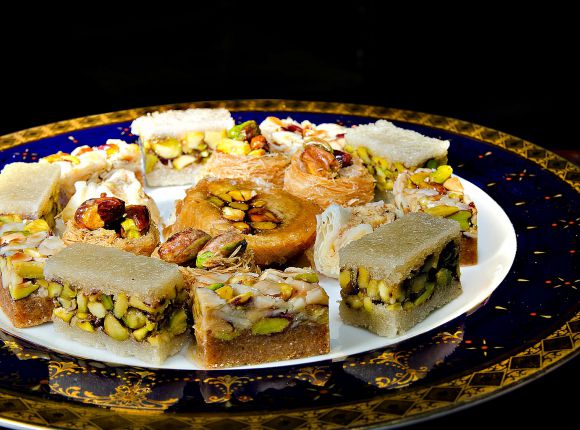
These pastries are to be found everywhere in Egypt, in a large palette of colors and smells. They are indeed so many, that one could easily lost. Our recommendation is made mostly out of concerns of packaging and accessibility, suggesting the following:
- Baklava: famous velo dough stuffed with walnuts/pistachios and sweetened by sugar syrup or honey
- Stuffed Dates: stuffed with almonds and dried
- Saraya Pie: special toasted bread pie sweetened by Caramel “burnt sugar” and served with cream.
- Basbosa: made of Smeed (semolina) “corn flour” with sugar and oil, almonds or walnuts can be added, stuffed with cream or blank.
- Semsemia: crunchy sesame seeds with sugar syrup and rose water.
In every other sweet's ingredients, one will find wheat/corn flour, sugar, lemon, hazelnuts, sesame-seed. In the past, most pastries used to be made with full-fat margarine, which now is usually replaced with vegetable oil. Downtown Cairo is a great place for a good purchase of famous pastry brands like “Queedar” and “La Pouar”.
Price:
One kilogram : 35 ~ 150 pounds (depends on amount of nuts and type of oils used)
10. Papyrus Manuscripts and Paintings “Replica”
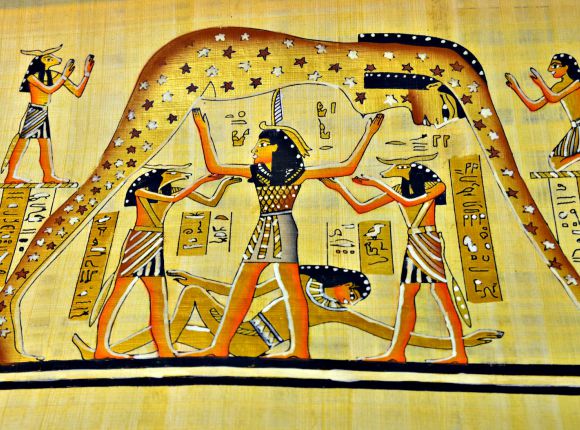
Note that all papyrus papers are hand-made. Readily available in Cairo's markets, original paintings and manuscripts by famous artists can turn out to be very expensive. The original ones are made by using original inks and high quality papyrus paper, and even illuminated inks that glow in the dark. They are however, a terrific investment - expect these paintings to last forever, just as the ancient manuscripts did. For smaller pockets, there are machine-stamped papyrus manuscripts and paintings, which are equally beautiful looking and lasting. The choice of works available on papyrus paper is vast, from from ancient Egyptian paintings and temple drawings and manuscripts, to modern art and Arabic typography. You can even ask the artists-sellers to draw your own name in hieroglyphs on a papyrus piece. Available in light beige original color, and dark brown aged paper, all painting are made from thick papyrus paper which can be hung on walls with or without a frame. Your loved ones will definitely be impressed.
Price:
Small ~30cm color printed: 20 ~ 25 pounds
Hand-painted ~ 30cm: 50~150 pounds
Hand-painted ~1m/1.5m: 350 ~ 1200 pounds
There are some famous artist signed paintings that sell for a lot more.
11. Pottery and Ceramics

Until today, Egypt is gifted with highly skilled potters, producing almost the same pottery shapes as their predecessors from the times of Pharaohs, used for utilitarian tasks in homes and outdoors decoration. The most famous ceramics and pottery comes from two places in Egypt: “Bany Swaif” - north - where the glazed and beautifully colored pots, dishes, and kitchenware are made from the best ceramic materials, with paintings showing the simple life of birds and green plants surrounding the artisans, and “Aswan” - south – known for its first-class “Aswanian Clay” or mud for porous pottery. Hand-crafted and decorated bowls and jars, are made on a hand turned potter wheel and then burnt in huge fire furnaces (kilns). Porous pottery are mainly used in Egypt to store and cool water, even in warm places. It is too easy to find Aswanian clay pottery (porous) all around the city, while glazed colored dishes are hard to spot.
Price:
Table plate (glazed and hand colored): 15~35 pounds
Salad mini collection (glazed and colored): 40 ~ 90 pounds
Porous mini jar: 10 ~ 15 pounds
Incenses burner with cover: 15~40 pounds
All prices vary depending on fine detail and size.
12. Belly Dancing Costume

Belly-dancing started in Egypt with the Arab incursions, who settled in the south. The dance was called Baladi dance, where mostly full-body garments were used (as the Arabs see it as inappropriate to uncover female body parts), tight, black or colored and decorated with coins, adorned with a waste-scarf as a belt.
Another known variant is Shaabi dance (dancers being called Ghazeeya), where the costume is more vivid in colors and decorations, but is still a one-piece dress. The moves are almost the same as in the Baladi, except for the part when the dancer uses a small brass instrument “Sagat” (finger cymbals) clamped to her fingers and a leg bracelet “Kholkhal” with brass coins.
During the last century, Sharqi dancing started to become popular, because of its more attractive, explicit moves. This new dance's boldness is also reflected in the fancy dress, divided in several pieces painted in fancy colors and adorned with many decorative accessories, like turbans or head scarves, hand scarves, waste belts with beads and coins.
You can see professional dancers in Al Haram street's night clubs to learn some new moves, or you can buy instructional DVDs to practice more advanced moves when at home. Purchasing such a costume is a must, especially when it is available in so many sizes and types. The costume should include the “one piece or two pieces” dress plus the scarfs, beads, belts, brass Sagat, and bracelets.
An outfit made of one piece would cost around 90 to 300 L.E., while a two pieces outfit starts from 150 up to 800 L.E. depending on the design, fabrics used, materials and props supplied, even though they can always be purchased separately (scarfs, bracelets, belts, etc..).
13. Ramadan Lantern “Fanoos”

The original Lanterns are created by Fawaniski (Lanterns Welder) “also called Samkarii” by welding sheet metal to create fabulous shapes and decorating its windows using beautiful colored glass. As this profession fades away, lanterns get really expensive sometimes depending on the size and materials used in addition to the details and decorations applied. Cheaper Chinese replicas are also available, usually made of plastic bodies with battery-powered bulbs. Original lanterns are to be found in the widest range of shapes from the “morabah” straight four sided, “mahroud” bent sides shape, “Abu Louz” almond shaped, “negma” star shaped to “mosadass” six sided shape, and many others.
The Fanoos makes an impressive art piece, anyone would be happy to own. Find one at Khan El Khalili, with prices ranging from 35 pounds to 700 pounds depending on the size and details.
14. Egyptian Musical Instruments
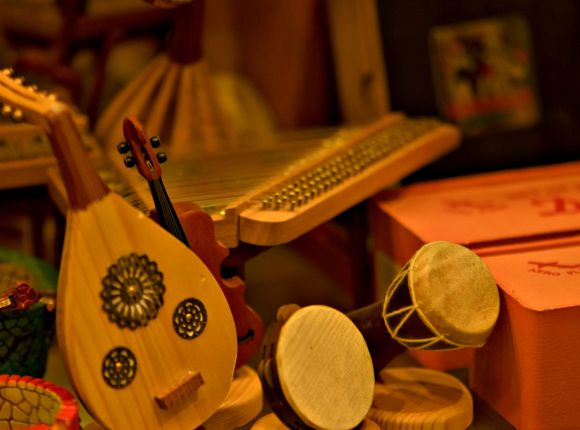
Now talking about the instruments themselves, let's start with the Nai, which is a light-weighted instrument producing faint, touching sad sounds. Keep in mind it is a true art to play this instrument, regarded by many as simply too difficult. If you want to try yourself, be daring! The Egyptian Nais are made of special light-weight wood and are not expensive at all. The Duff or Darbuka is the easiest to play, as we all know the beat. A professional darbuka is usually quite heavy as it is made out of metal, while an amateur one is usually made of wood, being much lighter and cheaper. The Duff is also quite popular, the advantages being that it is easy to carry and play. However, it is the Oud that is considered the most famous Arabian string instrument, with its easy-to-recognize pear shaped back and five pairs of strings. Ouds can be plain colored, or highly custom-decorated with conch shells and Arabic typography.
Price:
Small Nai : ~45 pounds
Oud : 300 ~700 (depends on wood used and decorations applied)
Duff: ~ 45 pounds
Small wooden Darbuka: ~15 pounds, large ~ 50 pounds
Metal professional Darbouka: 200~700 pounds (depends on size, brand, materials used, decorations)
15. Hand Blown Glass Works and Ornaments
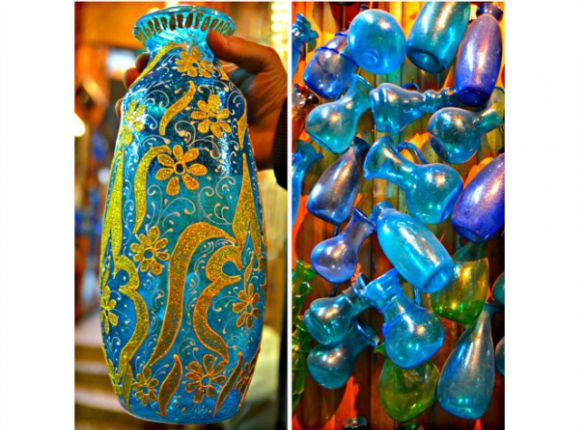
Nowadays, its artistic touch can be enjoyed in many products like small décor ornaments, or fancy colored vases and bowls. Must-have products are small, beautifully designed perfume and Kohl bottles, which come in thousand variations and sizes, thin and light-weighted, as well as large and heavy pieces. Be careful and request if not provided, an appropriate packaging as these delicate glass pieces, with their fine details and ornamentation are quite fragile. Also look for bottles with a steady, properly shaped base so the glass product doesn't lean when filled, a common issue with thin glass bottles.
Glass works and ornaments are easily found everywhere in Cairo, specially at El Khan “The Old Market” where naturally, all the interesting souvenirs are concealed. Prices for a small 10 ml bottle range from 10 to 20 L.E., while a fine detailed 50 ml would go up to 80 L.E.
16. Kohl
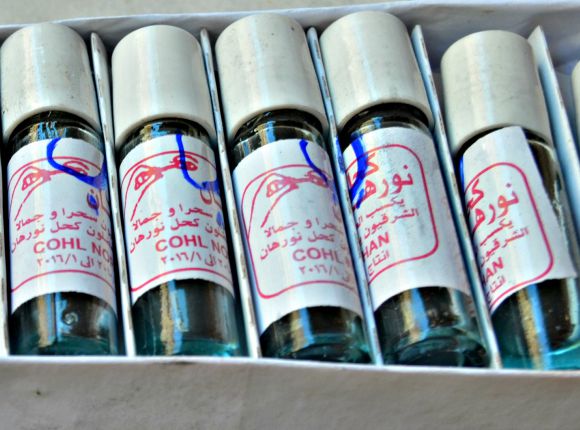
Kohl is widely used until nowadays. Although there are cheap and easier replacements of the product, Egyptians still prefer using the original powder. There are two kinds of Kohl powder: “Bared” translated as “cold” also known as regular Kohl which is used as a beauty product and “Hami” translated as “hot”, mainly used as a cure and eye-cleaner. “Hami” makes eyes tear, because of the Golden vine rock added to the Galena powder, believed to have curative effects for the eyes. Largely used is the famous Pakistani Kohl, made of sandalwood and other organic sources like charcoal. The Pakistani Kohl does not come in powder but in creamy state ready for application with pen.
Available in perfumery stores easily found in the Al Alzhar area, both types are sold in small containers. A small 25 grams one would cost about 15 L.E., but do consider buying a Kohl bottle made of copper or glass with the proper eye pen.
located in the entrance of El Ghoria st. Al Azhar.
Tel:(+20)225883347
Open all week from 9:30 a.m. till 8 p.m.
17. Kilim Carpets
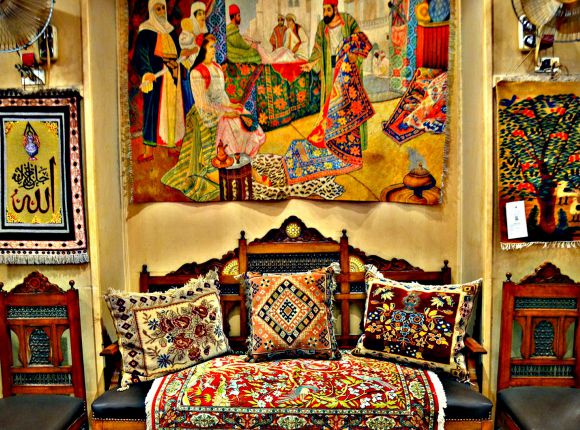
Kilim can be utilized in many ways. Large ones could be used as carpets, or door mats, couch covers, while the smaller ones can be hanged on walls as exquisite art pieces. Kilim carpets have a soft woolen texture, decorated in vivid colors mostly obtained from onion peels for browns, hibiscus flower for reds, and parsley for greens. Designs also vary from Nubian compositions of camels and houses, to Islamic patterns and geometric designs, or even modern art to match all tastes. Asuit and Fe-wa are two cities competing for excellence in Kilim making and design quality, so it is always better to look for a Kilim made in either one.
Price:
A small woolen Kilim ~50cm piece: 25~80 pounds
Larger pieces vary between 1m ~ 3.5m: 150~1200 pounds
Prices vary depending on actual size, materials used, design and stitch size
Khan el khalili
Sikket al-Badistan Islamic Cairo
Tel: (+20)25909128
www.elkahhal.com
Open all week from 10:00 a.m. till 9 p.m.
With another branch in:
El kahhal carpets
5 sphinx Square
Agouza
Giza
Tel: (+20)33058032
Other Interesting Souvenirs from Egypt
If traveling to Egypt is not on your immediate agenda, or you simply can't afford an extra space in your luggage, fortunately, these days, you can find a wide selection of authentic and truly interesting Egyptian souvenirs online. Presented here are some of the Egyptian products sought by foreign visitors, now available online for your convenience.
2. Alabaster Stone Items - Soft white alabaster stone, sourced at Luxor in the south of Egypt, is a popular material these days for making cool items: candle holders, dishes, vases, etc. Each piece is made by hand – from stone extraction at the quarry till the finishing polish of the end product – and thus has its own character.
3. Essential Oils - High quality original essential oils from Egypt – Musk and Geranium – will smell amazing on you and can also be used as an incense oil burner for aromatherapy or a massage oil. Also great if added to any unscented soap or shampoo. Geranium essential oil is also good for balancing and regulating hormones and bacteria in the body, and is deemed helpful in a number of skin applications, keeping the skin supple and balanced, reducing acne breakouts, and more.
Walking Tours in Cairo, Egypt
Create Your Own Walk in Cairo
Old Cairo Walking Tour
Tour Duration: 1 Hour(s)
Travel Distance: 1.0 Km or 0.6 Miles
Cairo Downtown Walking Tour
By the 4th... view more
Tour Duration: 2 Hour(s)
Travel Distance: 4.1 Km or 2.5 Miles




































